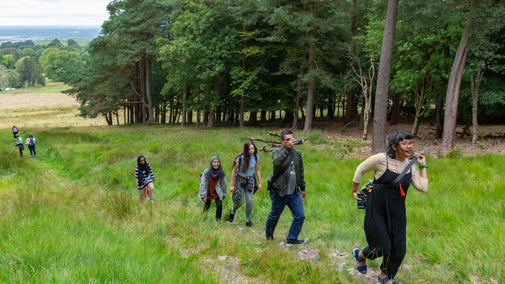Plantations and parkland walk
Cornwall
This 1.5-mile ramble takes you through one of the tree plantations at Penrose and then rejoins the parkland. Find out about the history of Penrose and enjoy spotting some of the local wildlife en route.
Near to
PenroseStart point
Penrose Hill car park, Helston. TR13 0RDTrail information
More near here
Boscastle Harbour walk
A gentle walk around the scenic village of Boscastle, taking in the river, the ancient harbour, and the famous blowhole.

Godolphin Hill walk
This gentle ramble up to the top of Godolphin Hill will reward you with some of the most impressive views over West Cornwall you can find.

Lizard Point walk: the most southerly place in Britain
Take in dramatic views of the Atlantic, visit the lighthouse and look out for local wildlife on this enjoyable walk around the most southerly point in Britain.

Wheal Coates tin mining walk
Explore the remnants of Wheal Coates's tin mining history, while taking in beautiful views of the Atlantic, on this short circular coastal walk.

Get in touch
Our partners

We’ve partnered with Cotswold Outdoor to help everyone make the most of their time outdoors in the places we care for.
You might also be interested in
Walking in Cornwall
From strolls that reward you with stunning views of the South West coast to gentle inland meanders, these are some of the best walks in Cornwall.

Cycling and horse riding at Penrose
There are acres to explore on your visit to Penrose, and it doesn’t have to be on foot. Miles of bridleways are waiting to be discovered on your horse, or by bike.

Staying safe at National Trust places
The special places in National Trust care sometimes come with a few risks for visitors, be it coastline or countryside. Find out how to keep safe throughout your visits.

Follow the Countryside Code
Help to look after National Trust places by observing a few simple guidelines during your visit and following the Countryside Code.

Cotswold Outdoor: our exclusive walking partner
Learn about the National Trust’s ongoing partnership with Cotswold Outdoor. Find out how they help us care for precious places and the exclusive discount available for National Trust supporters.

Walking
Explore some of the finest landscapes in our care on coastal paths, accessible trails, woodland walks and everything in between. Find the best places to walk near you.

Outdoor activities in Cornwall
Get active this season with outdoor activities at a National Trust place near you in Cornwall.



